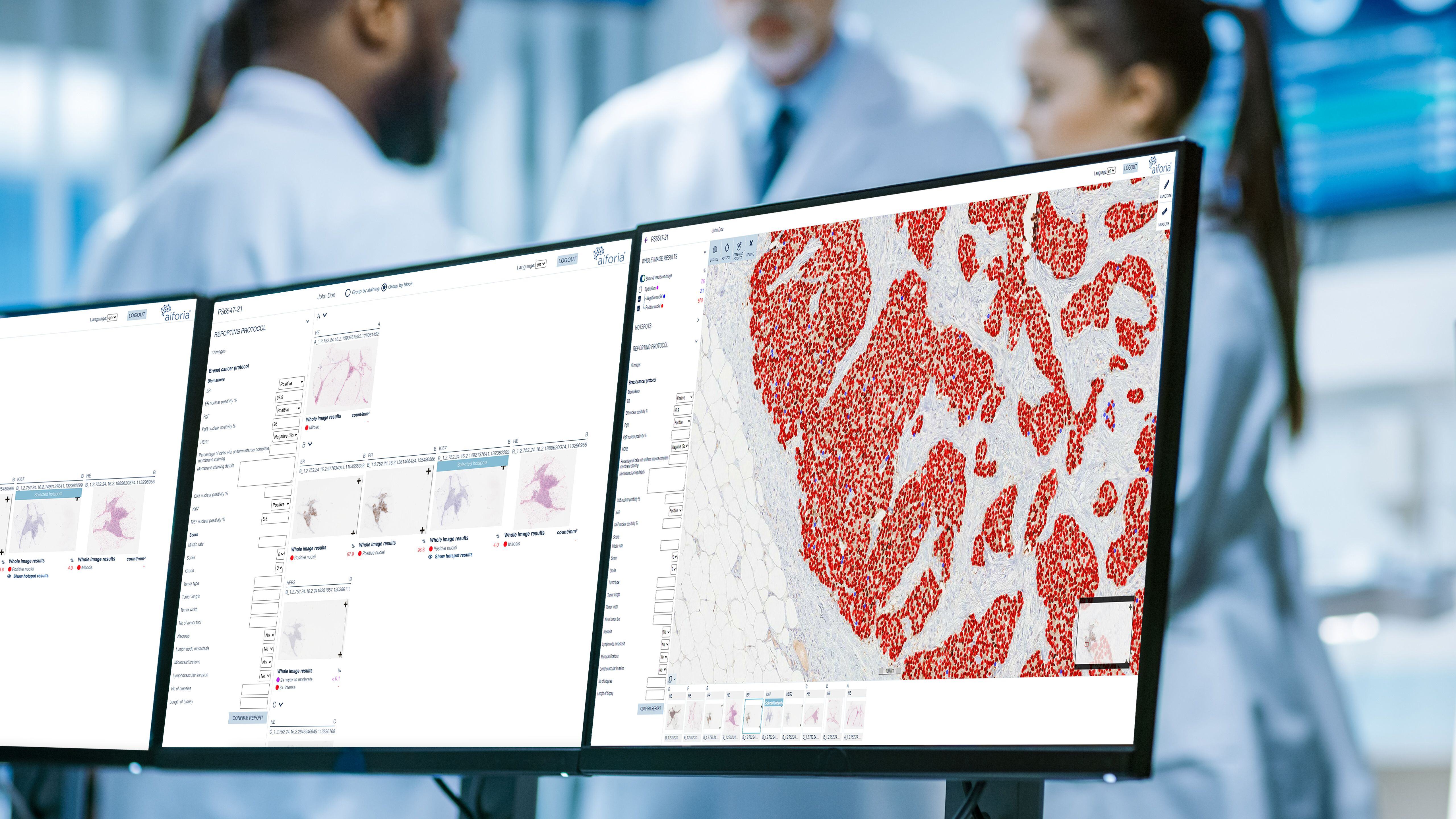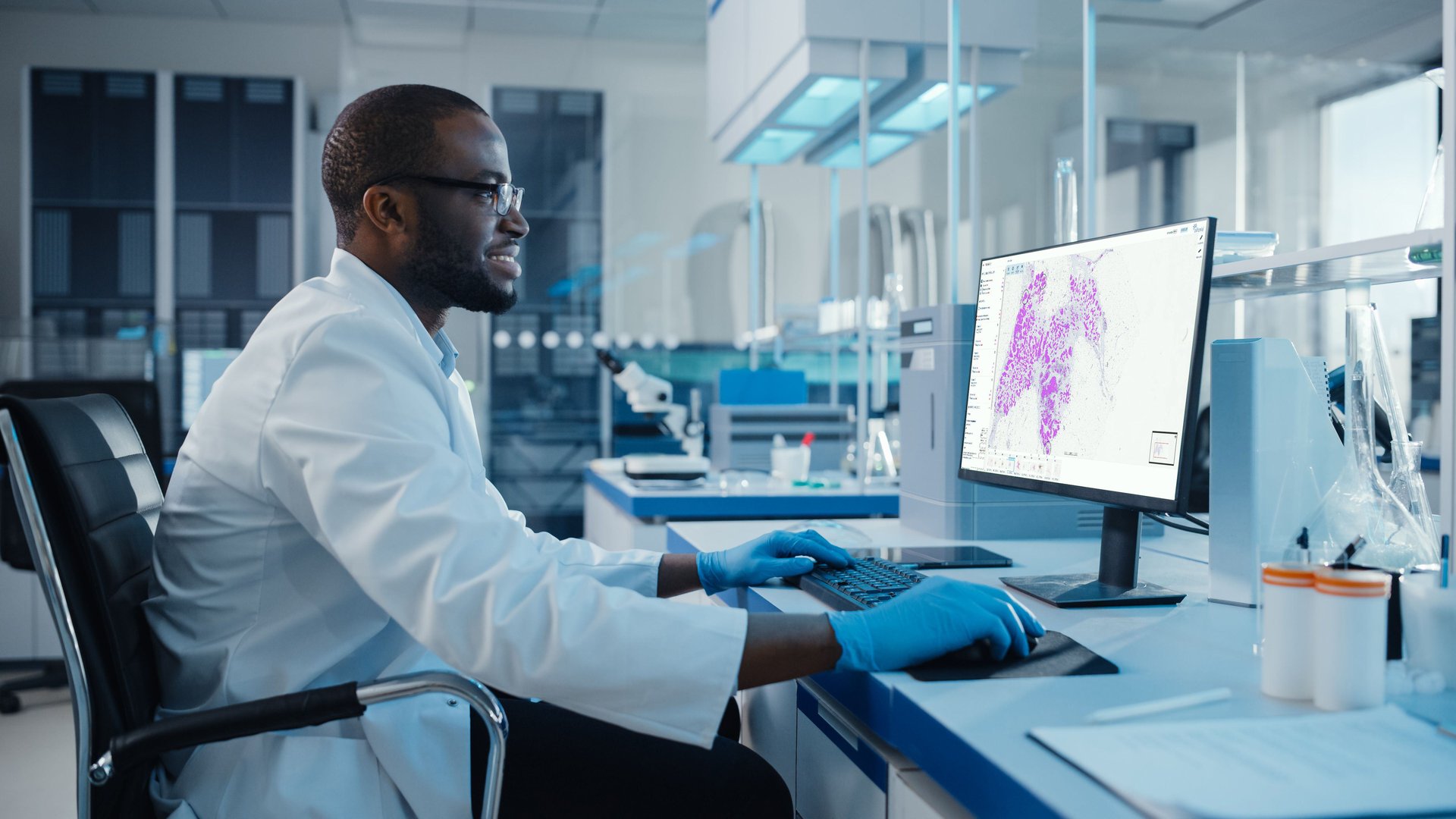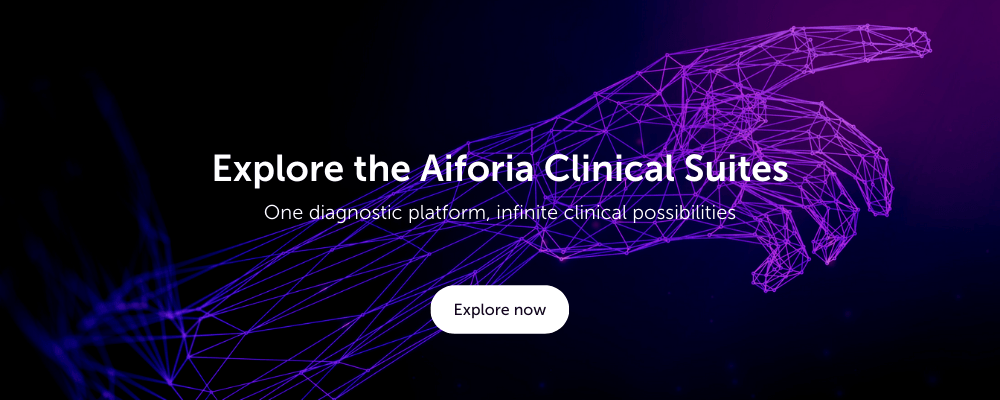Español, Français
Rising rates of disease like cancer increase sample numbers creating a bigger burden on pathologists, an already underrepresented group of healthcare professionals. The challenge is exacerbated by the fact that traditional clinical tools and processes available to pathologists are manual and subjective.
The digitization of pathology has helped address some of these challenges by enhancing clinical lab workflows and enabling more efficient collaboration. However, in order to fully reap the benefits of digital pathology in clinical diagnostic artificial intelligence (AI) must be considered. After all, effective treatment begins with a fast and precise diagnosis.

Adding AI for image analysis to the clinical workflow is vital in order to:
1. Scale productivity
AI is substantially faster at image analysis and enables the automation of manual, time-consuming tasks. Speeding up case review increases your pathology labs’ output allowing for more new patients to be taken in. Additionally with the time saved, pathologists can focus for longer on complex and rare cases.
A study on intraoperative brain tumor diagnosis found that an expert pathologist’s diagnosis during surgery, normally about a 40 minute process, can take under 3 minutes with the assistance of an AI model in the operating room. (1)
In an interview with Dr. Kevin Sandeman, Clinical Pathologist and Head of department at Region Skåne pathology lab in Sweden, he explained: “In terms of time savings from case prioritization, for example with prostate cancer diagnosis, when I work with prostate specimens and I receive 16 slides and somewhere within these slides is a tumor that can take up less than 2% of space on all the slides combined. This takes vigilance to find it. Therefore if the AI system can take that 2% area and present it to me to review at first then the diagnosis is much faster. This benefits my productivity.”
2. Increase diagnostic accuracy
Pathologists are highly specialized healthcare professionals, however the tools at their disposal for case review and clinical diagnostics are fallible and time-consuming. Artificial intelligence systems improve the accuracy of analysis, reduce bias and standardize sample review therefore democratizing care given to patients. An AI model trained to find metastasized breast cancer tumors was able to detect 92.4% of the tumors, compared to the human pathologist average of 73.2% (2).
The most beneficial use of AI is the combination of both a pathologist’s knowledge and AI’s accuracy and efficiency. In a validation study on AI assistance in mitotic count for identifying breast carcinoma, 87.5% of pathologists identified more mitoses with the assistance of an AI model, while 54.2% decreased the quantity of false positives (3). AI is set not to replace pathologists, but to supercharge them.
3. Reduce costs
Improved diagnostic accuracy is achieved with AI-assistance as bias and subjectivity are eliminated. AI systems analyze cases with 100% consistency. Reducing diagnostic error and misdiagnosis, while improving treatment accuracy with more detailed results, will result in direct cost savings due to greater precision.
Not only does misdiagnosis cost lives, it is a significant financial burden on both patients and hospitals. $386,849 was identified as the average price of cost per claim in cases involving diagnostic error from a 25 year study in the US on malpractice. (4)
According to a report, AI could account for up to $8 billion in annual savings for the U.S. healthcare economy by 2026 through more precise preliminary and automated image diagnosis. (5)
4. Enhance staff satisfaction
Better workload distribution can be achieved as pathologists spend less time on manual, repetitive tasks and more on assessing rare or complex cases that require a higher level of expertise and skills. The overall burden of rising caseloads is also alleviated with faster review times while the browser-based Aiforia platform enables flexible working.
In a five-year study on the experience of digital pathology (DP) implementation, 91% of pathologists thought DP reduced turnaround times, helped to decide on repeat ancillary studies, and was useful for prior case review. (6)
5. Improve patient outcomes
The improved diagnostic accuracy and consistency of analysis with AI assistance brings benefits not only to the hospital and pathologists but perhaps more importantly, to the patients as well:
- Enhanced treatment efficacy
- More personalized therapies to be administered
- Reduction of the amount of unnecessary interventions or surgeries
- Democratization of care given to patients
- Enhanced quality of service as patients receive diagnoses faster
“To the healthcare system in general, integrating multiple data modalities will become more and more important in diagnostics and treatment decisions, especially if we think about personalized care. In this AI could perhaps solve questions and suggest decisions that human experts can utilize in their educated decision-making,” explained Dr. Tuomas Mirtti, Consulting Clinical Pathologist and Chief Physician in the Helsinki University Hospital Diagnostic Center in Finland, in an interview with us.

References
- Nature Medicine, 2020
- arXiv, 2017
- BMJ Quality Safety, 2013
- Archives of Pathology & Laboratory Medicine, 2017
- Accenture, 2017
- Archives of Pathology & Laboratory Medicine, 2017
